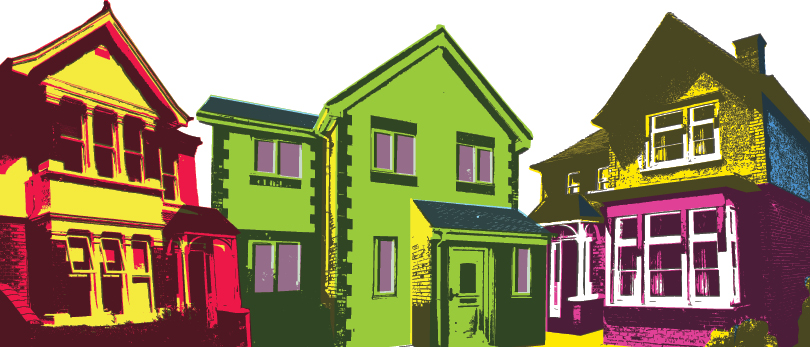Due to low inventories, buyers are looking at previously less-desirable neighborhoods
By Chasity Cooper
As we continue to navigate our new normal beyond a global pandemic, potential homebuyers are still eager to purchase properties—even if it isn’t in their ideal location. While last year’s market boom was tied to the desire for space due to shelter-in-place restrictions, the interest in real estate continues to skyrocket as inventory remains low nationwide.
According to Zillow, home values in the United States have increased 13.2% over the past year, with the potential to rise 14.9% in the next year.
Currently, buyers are eyeing properties in traditionally less-desired neighborhoods, with sellers maintaining the upper hand. Known as revival communities, these areas have historically been overlooked by homebuyers in cities like Detroit, Pittsburgh and Columbus, Ohio. Now, REALTORS® are finding that properties in these areas are not only fiercely competitive, but the competition can come with a cost.
Demand is high
Vicki Workman, CRS, is a REALTOR® based in Columbus, Ohio, and in addition to helping her clients find their dream homes, she is currently rehabbing her father’s home to eventually put on the market. “Two years ago, in a neighborhood like his (which is on the outskirts of Columbus) you could hardly give the houses away,” she says. “The value then was around $100,000, and now homes in this area are selling for $175,000. Every other house on the block is getting fixed up and looking nice.”
Workman says that as the value of the area continues to dramatically increase, inventory remains scarce—even as far out as 40 miles from major city centers. And for the homes that do become available, they aren’t on the market for very long. “One strategy that I’ve encouraged for my home sellers is posting a ‘coming soon’ listing for three or four days before we go to market,” she says. “We go to market, say on a Friday evening, and we stop showing on Monday at noon—wanting our best and highest offer by Tuesday at noon—and it works. I’ve seen up to 12 offers on one listing using that strategy, and up to 30 showings within that short time frame.”
To win the competition, some buyers are offering to pay sellers’ closing costs or waive inspections altogether—which she does not recommend.
“Competition among potential buyers is making neighborhood revitalization more common, but I do my best to remind my clients to be realistic,” Workman says. “I’ve had buyers express concern that their homes may not be worth as much five or ten years down the line, and I have to be honest with them. The market changes so much and so quickly, so you have to be prepared.”
The pros and cons
To meet the demand, traditionally less-desirable neighborhoods are doing their best to attract a wide demographic of homebuyers. From young couples and families to investors, revival communities are improving their infrastructure and bringing in new business.

Mark Handlovitch, CRS, a REALTOR® based in Pittsburgh, says while revival community members are taking steps to invest in their areas, there are pros and cons to the influx of popularity to these areas.
“In addition to buying a house at a reasonable price, the pro for the people who own in a revival community is that their home values are going up in a steady fashion,” says Handlovitch. “The con, however, is that those generations of people who might have raised their children in that same community might not be able to afford that.”
The COVID-19 pandemic has undoubtedly created a market that gives the seller the ultimate advantage. And with the government canceling foreclosures, there hasn’t been an opportunity for the market to reset itself.
“Foreclosures are a natural occurrence in the marketplace, so when [the moratorium is] removed, a lot of inventory that would naturally hit the market leaves with it,” Handlovitch says. “The removal of that whole segment has driven prices and demand, which has attributed to our current situation.”
Handlovitch encourages his clients not to sell their homes only to resell them, but to navigate the market with intention.
“I’ve seen people who are buying homes and they feel like they have to buy, and I keep telling them: If you don’t have to get into this market, take a step back,” he says.
“I think that potential buyers need to evaluate their situation and understand that the market will level out eventually, once there is enough inventory.”
With the market currently unpredictable, it’s not uncommon for people to be a little hesitant and wonder if history might repeat itself. But in the meantime, it’s important for REALTORS® to help their clients make the best decision for their future.
There are government programs to boost home sales in revitalized areas. Check out hud.gov for more information.
Photo: iStock.com/smartboy10








